About Red Fort (Lal Quila)
Welcome to our guide to the famous Red Fort (Lal Quila) in Delhi, India. Our blog is the source where you get to know so much about this journey and exploration. We want to give you all the information you need about this beautiful historical site. The Red Fort is one of the best places to visit in Delhi in 2024 for history lovers. So, whoever reads this blog, get ready to go on this journey with us. In this article, we will tell you about the interesting past, beautiful buildings, and cultural importance of Red Fort. So come with us on a memorable journey to the Red Fort.
Red Fort (Lal Quila): Timings & Tickets Price – Visitor Information
- About: Red Fort (Lal Qila)
- Label: Must Visit
- Tags: Forts & Palaces
- Time Required: 2-3 hours
- Entry Fee:
- Indian Citizens, citizens of SAARC and BIMSTEC nations: Ticket Price INR 35
- Other foreigners: Ticket Price INR 500,
- Video Camera: For Videography INR 25
- No fees for children below the age of 15
- Built-in: 1639
- Nearest Metro Station: Lal Quila & Chandni Chowk Nearest Metro Station
- Nearest Railway Station: Old Delhi Railway Station
- Nearest Airport: Indira Gandhi International Airport
- Opening Hours: 9.30 am to 4.30 pm
- Closed Days: Monday
- Red Fort address: Netaji Subhash Marg, Chandni Chowk, New Delhi, Delhi, 110006, India.
- Recommended Season to Visit:
- Monsoon: August To September
- Summer: Starts in early April and peaks in May. Temperature is 32°C (avg).
- Winter: Starts in November and peaks in January. The average temperature is 12 to 13°C.
We trust that this information will be of great benefit to you.
Red Fort (Lal Quila) Photos
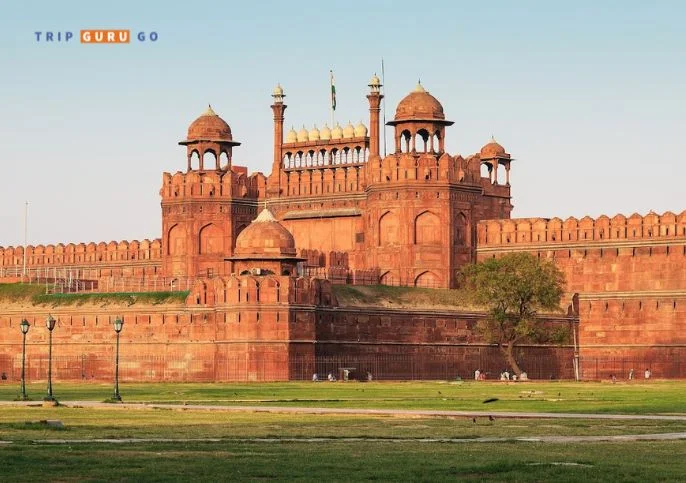
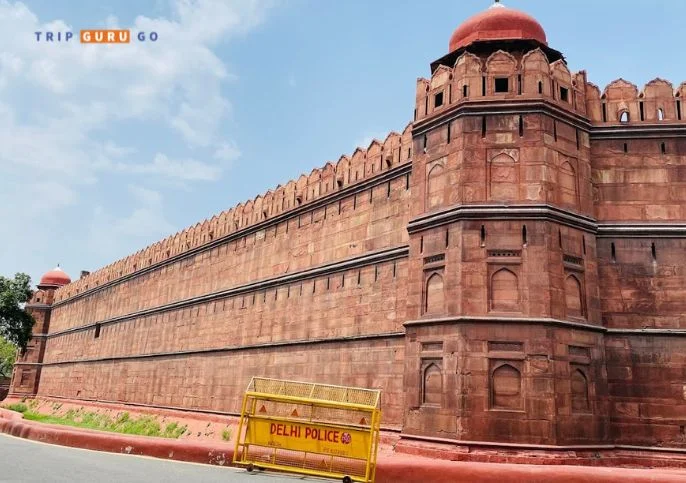
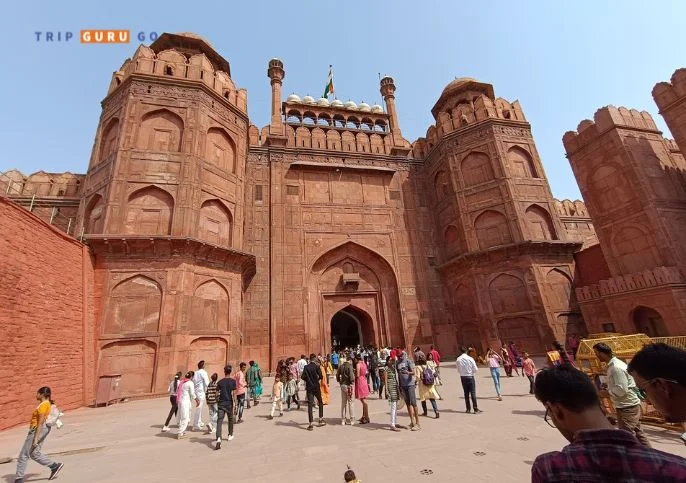
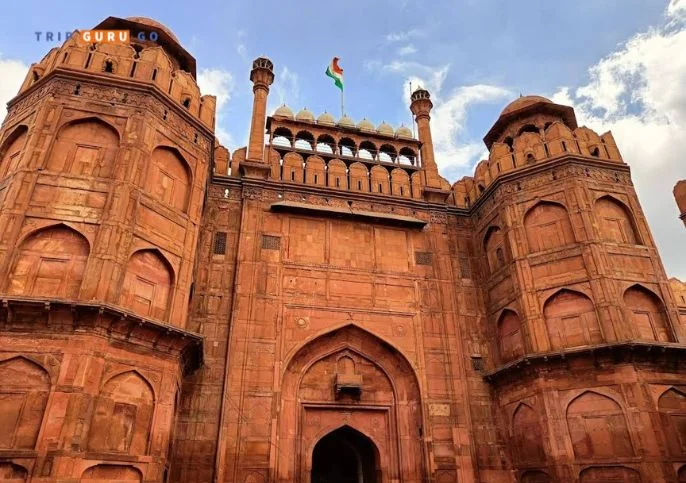
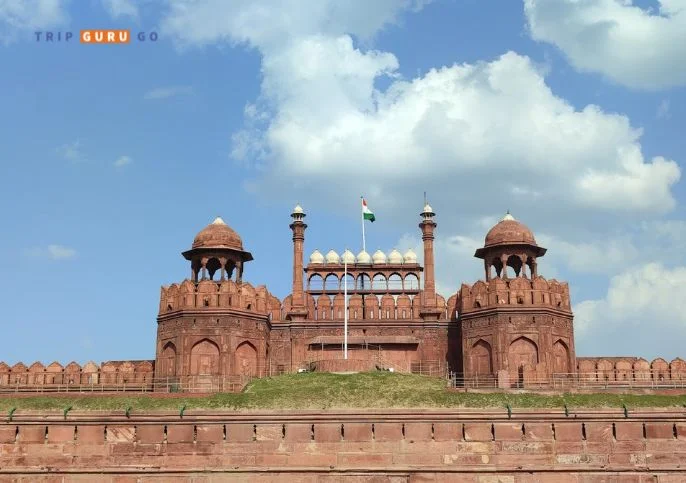
History & Architecture of the Red Fort (Lal Quila)
The Mughal Era
The Red Fort, known as Lal Qila, holds significant importance in Indian history. In the 17th century, the Mughal emperor Shah Jahan ordered the building of the Lal Qila as a protected house. The Mughal dynasty lived there for almost 200 years. Skilled artisans and architects collaborated to create this remarkable piece of architecture from 1638 to 1648. The name of the fort comes from the red sandstone walls. Skilled workers built these structures to shield them from enemy attacks and to showcase the grandeur of the Mughal Empire.
Red Fort Architectural Marvels
The Red Fort’s architecture is a stunning example of how Persian, Islamic, and Indian architectural styles come together in a unique and beautiful way. The complex spans 250 acres and encompasses a variety of structures, including palaces, gardens, audience halls, and mosques. The fort is absolutely stunning! Beautiful carvings, intricate marble inlays, and magnificent domes adorn the buildings with their exquisite decorations. The Diwan-i-Aam, also known as the Hall of Public Audience, and the Diwan-i-Khas, or the Hall of Private Audience, are both incredible examples of architectural brilliance that visitors can look forward to experiencing.
Exploring the Red Fort (Lal Quila)
Diwan-i-Aam
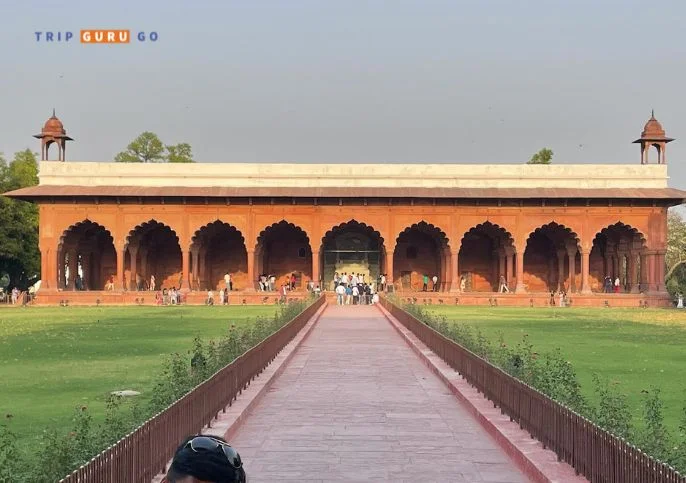
The Mughal emperor Shah Jahan used the Diwan-i-Aam at the Red Fort in Delhi as his meeting room. Here, the masters would talk to the people and try to solve their problems. The open front of the hall had red sandstone rooms on either side. The hall was ringed by vaulted stairs. It is a beautiful piece of architecture.
Which measures 100 feet by 60 feet and has 27 square sections formed by pillars and arches. When you go into the Diwan-i-Aam, you will be able to see how the emperor used to listen to petitioners in this grand hall. The grand arches and carved pillars of the hall create a sense of awe-inspiring opulence. Imagine an emperor sitting on a fancy marble chair and talking to the people while listening to their problems.
Diwan-i-Khas
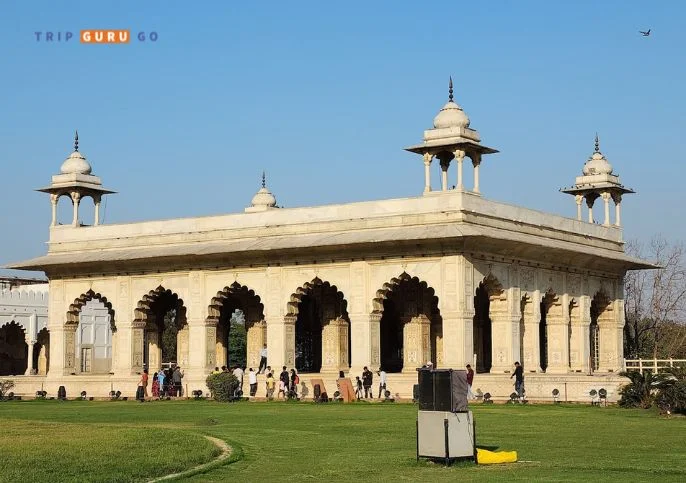
In 1648, the architects constructed the Diwan-i-Khas, also known as the Hall of Private Audience, within the premises of the Red Fort in Delhi. At that time it served as a reception place. Shah Jahan, the Mughal Emperor, used it to host courtiers and dignitaries. Also referred to as the Shah Mahal, the hall had a north gate leading to the inner court named Jalau Khana. It had two enclosures, one for nobles and another for lower-ranking individuals.
They tore down the structure after the rebellion of 1857. It was 90 feet by 67 feet and had a room in the middle ringed by arches that rose from flower- and gold-decorated marble beams. The once-inlaid silver and gold ceiling was replaced in 1911. The Peacock Throne once graced this hall, as described by travelers. After the rebellion of 1857, looters reduced this hall to ruins, and it remains so today. But, the restoration efforts of the government have revived its complex pattern.
Lahori Gate
The main entrance to Delhi’s Red Fort is through the Lahori Gate, which has beautiful building features. The gate is on the western wall of the fort. Its name comes from the fact that it leads to Lahore, which is now in Pakistan. This gate is three stories tall and has curved panels on each floor. On each side, there are semi-octagonal towers with open octagonal platforms on top.
The building comprises mostly of red sandstone, but it features white stone tops on the pavilions. The battlements around the gate look like flames. Aurangzeb added a barbican that was 10.5 meters high and had an opening in the north. Since 1947, on India’s Independence Day, the Prime Minister has been delivering speeches and raising the national flag at this gate.
Delhi Gate
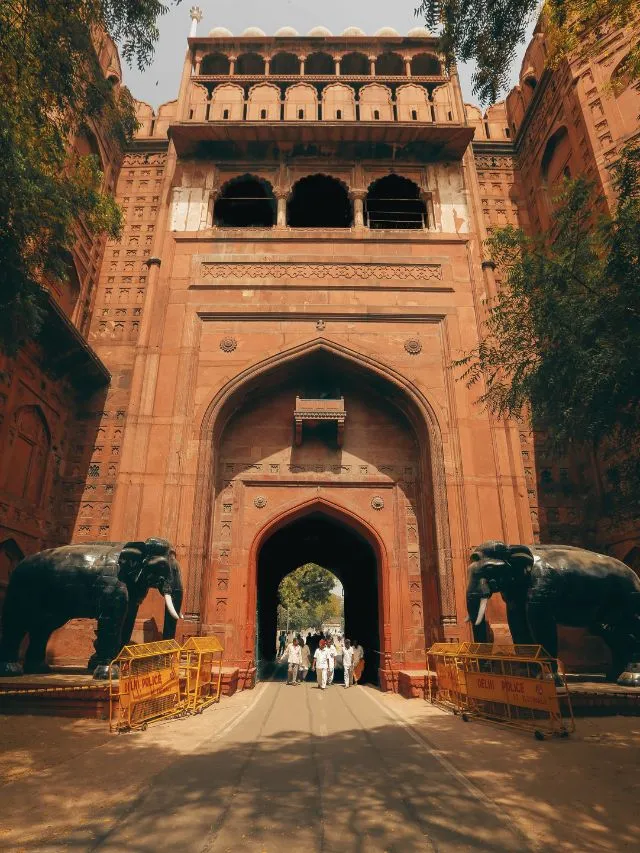
The Delhi Gate is an entrance to the Red Fort in Delhi. It is on the south wall of the fort. This gate, named after the city it goes to, looks a lot like the Lahori Gate. Shah Jahan had it built, and it has a 10.5-meter-high barbican that faces west. Aurangzeb added to it later. The gate has a three-level structure with square, rectangular, and rounded curved pieces made of red sandstone. Each side features semi-octagonal towers that crown open octagonal structures with roofs of white stone. Between these buildings, seven tiny chhatris with marble domes make a complex screen. Stone elephants guard the outer gates, which is a reflection of history’s echoes.
Chhatta Chowk

Behind the Lahori Gate, the Chhatta Chowk is an old covered market inside Delhi’s Red Fort. It has a broad dome that covers 32 shops that house two storeys. Chhatta Chowk dates back to the 17th century when Shah Jahan was the ruler. Expensive things like silk, cash, and gems were sold in this market to meet the needs of the rich.
This unique Mughal building wonder went against the open-air mart norms of the time. It took its inspiration from Peshawar’s covered market. People used to refer to it as market-i-Musaqaf, which means “roofed bazaar. It had beautiful arches and bright paintings on the ceiling. In the 20th century, people closed off the dome, altering their appearance. Plans are in the works to fix it up and keep this look into the past.
Rang Mahal
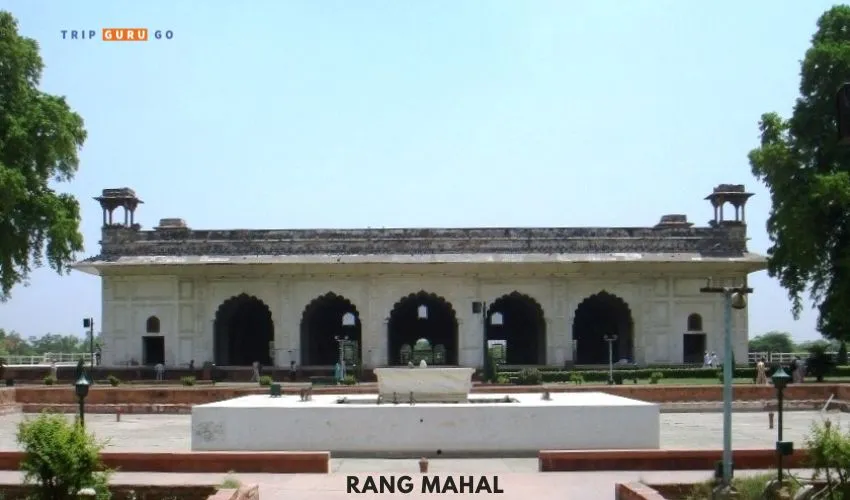
Explore the Rang Mahal, home to the emperor’s wives and concubines. The beautiful decorations and art in this house amaze people with their wide range of colors. You can still feel the love, desire, and beauty that once filled these rooms when you walk through them. The Rang Mahal is part of the Red Fort in Delhi. When Shah Jahan was in power, it was part of the royal palace and was a place where royal women could rest.
After the British took over in 1857, they changed it into a mess hall for a short time. They named some parts of the Taj Mahal “Sheesh Mahal” because they adorned the ceiling with mirrors. Skilled artisans decorated and painted other sections of the monument. A small stream of water that flowed through the marble palace into a carved floor bowl was one of the most interesting parts. Also, the Rang Mahal had a basement where women went to cool off in the summer.
Moti Masjid
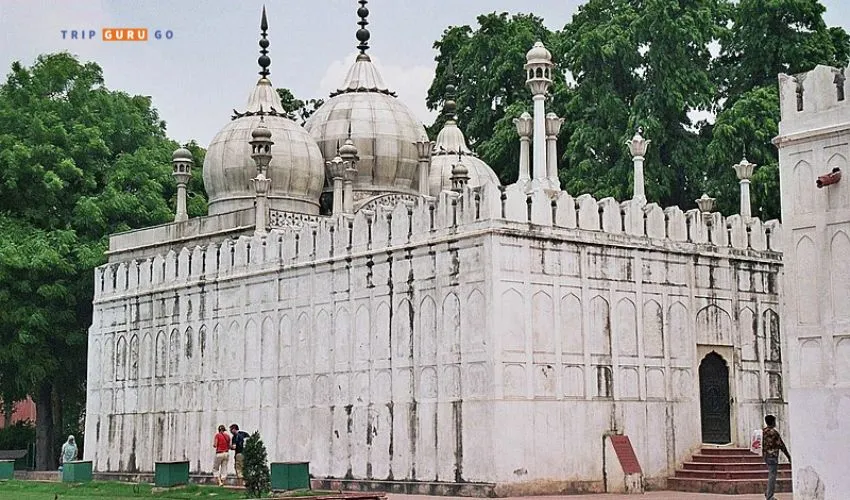
Visit the Moti Masjid, the Pearl Mosque, located within the fort complex. This pristine white marble mosque stands as a symbol of devotion and tranquility. Its harmonious architecture and serene atmosphere make it a must-visit destination for spiritual solace.
Hayat Bakhsh Bagh
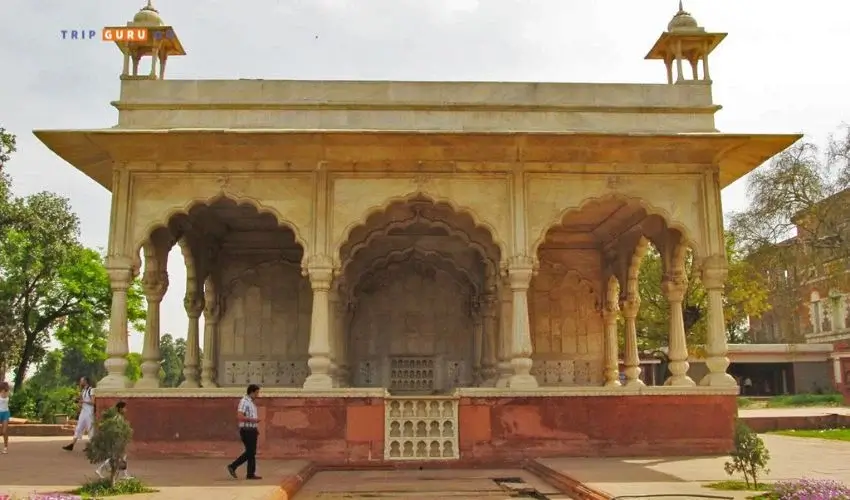
Walk through Hayat Bakhsh Bagh, which is a beautiful garden complex inside the fort. Get lost in this paradise’s lush grass, fragrant flowers, and sparkling waterfalls. The park is a peaceful place to get away from the noise and chaos of the city. It is a nice place to sit and think.
Hira Mahal
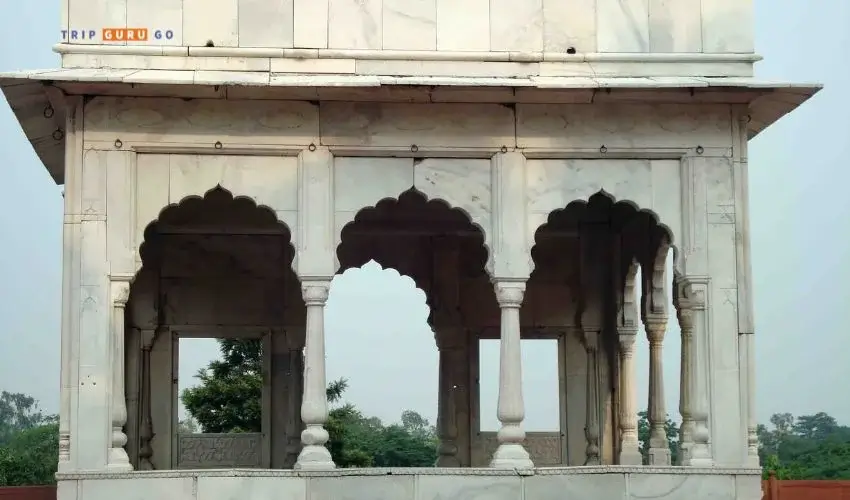
Find out about the Hira Mahal, which is also called the Diamond Palace. It was once the emperor’s private home. Even though the castle is in ruins, it still has a sense of wonder and drama. As you look at what’s left of this once-beautiful home, let your mind roam.
Mumtaz Mahal
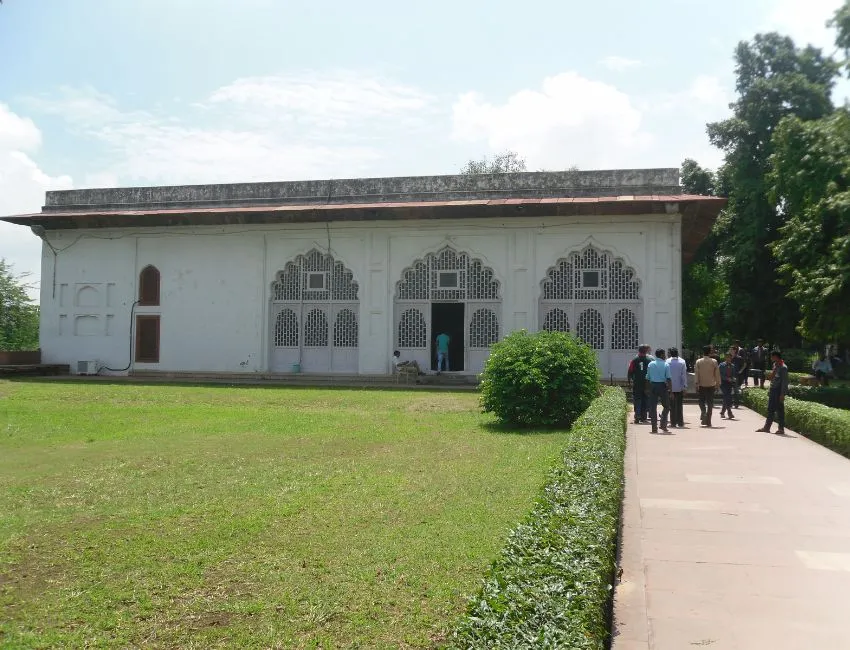
Mumtaz Mahal is a palace inside the fort. Emperor Shah Jahan named it after his beloved wife, Mumtaz Mahal. It was the private home of the ruler and gave a glimpse into the luxurious life of the Mughal royal family. The Mumtaz Mahal is one of the six main buildings that face the Yamuna River. White marble constructs the lower walls and towers, while arched piers divide the six flats within.
The rooms, adorned with floral paintings, exude elegance. The British repurposed this section of the Zenana as a jail camp during their rule. It is now home to the Red Fort Archaeological Museum, which has things from the Mughal period. The history of the Mumtaz Mahal and how beautiful it is as a building show how grand people were back then.
Nahr-i-Behisht
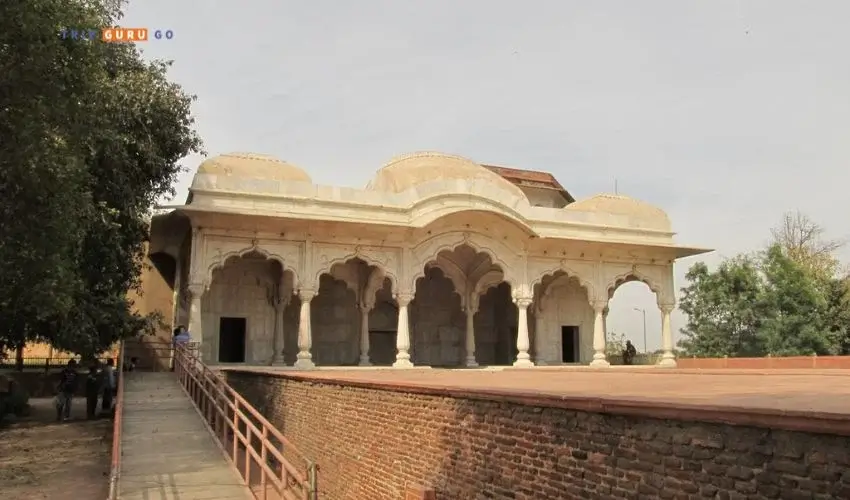
You can end your journey at the Nahr-i-Behisht, also known as the “Stream of Paradise”. It is a peaceful waterway that runs through the grounds of the fort. This oasis-like feature adds to the general beauty and calmness of the Red Fort. Thereby making it a beautiful place to contemplate and enjoy the beauty of nature.
The Light and Sound Show: Reliving History
Every night, a beautiful light and sound show is put on at the Red Fort to make it more appealing as a tourist spot. Through a mix of lights, music, and storytelling, the show brings to life the historical events and stories that happened at the fort. So it feels like traveling through time.
Red Fort (Lal Quila) Timings 2024: Plan Your Visit
The Red Fort timings in 2024 are from 9.30 AM to 4.30 PM, operating on all days except Mondays. The opening time of Red Fort Delhi is 9.30 AM, and it closes its gates at 4.30 PM. Plan your visit to explore this historical marvel and immerse yourself in its rich heritage. To avoid crowds on weekends and holidays, it’s best to book online and use QR codes for a smooth experience.
- Operating Hours: 9.30 am to 4.30 pm
- Closed on: Monday
Red Fort (Lal Quila) Tickets & Light Show Price in 2024
In 2024, tourists to Red Fort can buy tickets in many different ways. Red Fort tickets priced at Rs. 35 for Indians. While Rs 550 is charged to tourists. The fee to get in is Rs. 35 for people from SAARC and BIMSTEC. The ticket price for the Red Fort and Museum is Rs. 56 for Indians and Rs. 870 for foreigners. On Mondays, the Red Fort is still closed.
How to Book Red Fort (Lal Qila) Tickets Online?
To save time, you could buy tickets at the door by scanning a QR code. For a smoother trip, it’s best to book Red Fort tickets online, especially if you want to avoid long lines. Red Fort (Lal Qila) Online Ticket Booking: You can conveniently book tickets for Lal Qila (Red Fort) online either on-site or through this website. Advanced booking is not necessary, allowing for a seamless experience. Those who want to see the amazing Red Fort Light and Sound show can also book tickets.
| Category | Red Fort Ticket Price | Red Fort & Museum Ticket Price |
|---|---|---|
| Indian Visitors | Rs. 35 | Rs. 56 |
| Foreign Visitors | Rs. 550 | Rs. 870 |
| SAARC & BIMSTEC Nationals | Rs. 35 | Rs. 56 |
Please note that the prices mentioned are subject to change and may vary.
Celebrations at the Red Fort: Independence Day and Beyond
The Red Fort holds great significance in modern India as it is the venue for the country’s Independence Day celebrations on the 15th of August each year. The Prime Minister of India hoists the national flag and delivers a speech from the ramparts of the fort, marking the beginning of the festivities.
Red Fort Museum: Preserving the Past
In the Lal Qila building, there is a museum with a large collection of Mughal-era items and relics. Visitors can look at a variety of displays, such as old texts, guns, outfits, and works of art, which help them learn more about the fort’s past.
Nearby Attractions: Exploring Old Delhi
A visit to the Lal Qila offers an opportunity to explore the bustling streets of Old Delhi. Nearby attractions such as Jama Masjid, Chandni Chowk, Rashtrapati Bhavan, and Raj Ghat add to the cultural and historical charm of the area, making it a must-visit destination for tourists.
Nearby Attractions of Red Fort (Lal Quila):
- Chandni Chowk: Bustling market and street food hub.
- Raj Ghat: Gandhi’s memorial site.
- Fatehpuri Masjid: Beautiful ancient mosque.
- National Gandhi Museum: Insights into Gandhi’s life.
- Shri Digambar Jain Lal Mandir: Ornate Jain temple.
- Gurudwara Sis Ganj Sahib: Significant Sikh temple.
- Salimgarh Fort: Intriguing historical fortress.
- Feroz Shah Kotla: Ancient fort ruins.
- Daryaganj Book Market: Book lover’s paradise.
Red Fort (Lal Quila): A UNESCO World Heritage Site
In 2007, UNESCO named the Lal Qila a World Heritage Site, which shows how important it is culturally. This iconic status shows how great its architecture is. This is how important it is in history, which increases its world recognition even more.
Red Fort in Popular Culture: Bollywood and Beyond
The Lal Qila has left an indelible mark on Indian popular culture. Many Bollywood films have featured the palace, contributing to its iconic status. Its beauty and importance in history have made it a favorite filming spot and a reminder of India’s rich history.
How to reach Lal Quila (Red Fort)?
Reaching the Red Fort is convenient:
- By Metro: The Lal Qila Metro Station, situated on the Violet Line, is a mere 200 meters away from the Red Fort. Take the Delhi Metro‘s Violet Line and disembark at the “Lal Quila” station, located near the fort’s entrance.
- By Bus: Numerous local buses serve the area around the Red Fort. Check local routes for the one that suits you best. The Red Fort Bus Stop, 400 meters from Lal Qila, is the closest ride. From here, the big fort is a short walk. The 101A, 104, 118 EXT, 164, 171, 172, 185, 210, 213, 215, 216 ACL, and 347 bus routes make getting to the bus stop easy.
- By Auto-Rickshaw or Taxi: Hiring a rickshaw or taxi offers a comfortable and direct mode of transportation.
- By Walking: If you’re staying nearby, a leisurely walk is a great way to explore and reach the fort.
Plan your route and transportation depending on convenience and closeness.
Address Of Red Fort/Lal Qila:
Netaji Subhash Marg, Lal Qila, Chandni Chowk, New Delhi, Delhi, 110006
Conclusion
The Red Fort, also called Lal Quila, is a proud reminder of India’s rich past. It is a must-see place for tourists from all over the world because of its beautiful buildings, rich history, and cultural importance. When you go to the Lal Qila, it’s like taking a fascinating trip through time that lets you feel the grandeur of the Mughal era. As you learn more about the fort’s history and how it works, you will gain a better understanding of India’s rich cultural history.
FAQs:
On average, it takes about 2 to 3 hours to explore the Red Fort thoroughly.
Yes, visitors are allowed to take photographs inside the Lal Qila. Yet, there may be certain restrictions in specific areas.
Visitors with disabilities can use ramps and toilets that are easy to get to at the Red Fort. But, some areas may have limited accessibility due to the fort’s historical architecture.
Yes, guided tours are available at the Lal Qila. They provide detailed information about the fort’s history, architecture, and significance.
The entry time for Lal Quila is from 7:00 AM to 5:30 PM, except on Mondays.
Red Fort tickets cost Rs 35 for Indians and Rs 500 for visitors. The Light and Sound performance costs Rs 60 for adults and Rs 20 for children. Weekend adult tickets cost Rs 80 and child tickets Rs 30.
The Red Fort, also known as Lal Qila, is located in Old Delhi, India. It is not in Agra. The Lal Qila in Agra is known as Agra Fort, which is a separate historical monument.
Inside the Red Fort, you can’t bring food. People are told to eat before or after coming to see the site. Outside the fort area, there are restaurants and other places to eat close by.
The nearest metro station to Lal Qila is Chandni Chowk Metro Station.






